Treatments
The SMART Clinic is committed to accurately diagnosing your conditions and providing effective treatments to relieve pain and get you back to an active and productive lifestyle. Click on the list of treatments below to learn more.
Basivertebral Nerve Ablation (Intracept)
Botox
Bursa Injections
Denervation
Discography
EMG/NCS
Endoscopic Discectomy
Endoscopic Spine Surgery
Epidural Steroid Injections
Facet Joint Injections
Hip Injections
Joint Injections
Knee Injections
Minimally Invasive Lumbar Spine Surgery
Platelet-Rich Plasma (PRP) Therapy
Radiofrequency Ablation Procedures
Regenerative Medicine
Sacroiliac Joint Injections
Shoulder Injections
Spinal Cord Stimulation
Sports Rehabilitation/Physical Therapy
Stem Cell Therapies
Sympathetic Block
Synvisc Injections
Trigger Point Injection
Vertebroplasty/Kyphoplasty
Viscosupplementation

Minimally Invasive Spine Surgery
Lorem ipsum dolor sit amet, consectetur adipiscing elit, sed do eiusmod tempor incididunt ut labore et dolore magna aliqua. Ut enim ad minim veniam, quis nostrud exercitation ullamco laboris nisi ut aliquip ex ea commodo consequat. Duis aute irure dolor in reprehenderit in voluptate velit esse cillum dolore eu fugiat nulla pariatur. Excepteur sint occaecat cupidatat non proident, sunt in culpa qui officia deserunt mollit anim id est laborum.
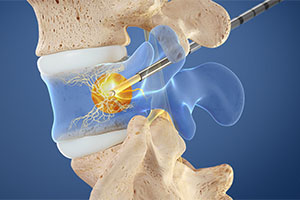
Basivertebral Nerve Ablation (Intracept)
Lorem ipsum dolor sit amet, consectetur adipiscing elit, sed do eiusmod tempor incididunt ut labore et dolore magna aliqua. Ut enim ad minim veniam, quis nostrud exercitation ullamco laboris nisi ut aliquip ex ea commodo consequat. Duis aute irure dolor in reprehenderit in voluptate velit esse cillum dolore eu fugiat nulla pariatur. Excepteur sint occaecat cupidatat non proident, sunt in culpa qui officia deserunt mollit anim id est laborum.

Botox
Lorem ipsum dolor sit amet, consectetur adipiscing elit, sed do eiusmod tempor incididunt ut labore et dolore magna aliqua. Ut enim ad minim veniam, quis nostrud exercitation ullamco laboris nisi ut aliquip ex ea commodo consequat. Duis aute irure dolor in reprehenderit in voluptate velit esse cillum dolore eu fugiat nulla pariatur. Excepteur sint occaecat cupidatat non proident, sunt in culpa qui officia deserunt mollit anim id est laborum.

Diabetic Neuropathy Management
Lorem ipsum dolor sit amet, consectetur adipiscing elit, sed do eiusmod tempor incididunt ut labore et dolore magna aliqua. Ut enim ad minim veniam, quis nostrud exercitation ullamco laboris nisi ut aliquip ex ea commodo consequat. Duis aute irure dolor in reprehenderit in voluptate velit esse cillum dolore eu fugiat nulla pariatur. Excepteur sint occaecat cupidatat non proident, sunt in culpa qui officia deserunt mollit anim id est laborum.
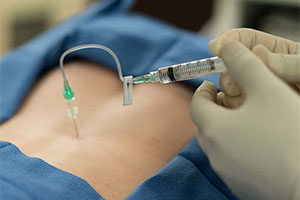
Epidural Steroid Injections
(Cervical, Thoracic & Lumbar)
Epidural steroid injection is an effective minimally invasive treatment for some patients with low back or leg pain due to nerve impingement. Commonly, nerves which supply the back or legs are compressed near the spine either by a bulging disc, a bone spur, or by scar tissue. This causes the nerve to become irritated, inflamed and swollen. Cortisone is a powerful anti-inflammatory with the ability to decrease swelling and inflammation in this nerve, thus breaking the vicious cycle of swelling and irritation. The procedure is performed using fluoroscopy (x-ray guidance) so that the medication can be placed precisely where the physician feels it will be most effective.
Following this procedure, some patients feel a warmth or numbness in their legs from the effects of the local anesthetic. You should not drive for the remainder of the day since it is possible to have some residual weakness in your legs for a few hours. Relief from the injection generally takes about three days although some patients feel relief immediately and others do not feel relief up to a week or so. During the first few days after the injection, it is common to feel increased back discomfort from the effect of the needle having been placed. Side effects such as headache occur in less than 1% of patients. More serious complications such as infection can occur but they are exceedingly rare.
About 70% of patients who have not had previous back surgery obtain relief from epidural steroid injections. For patients who have had previous back surgery, the results are somewhat less. Many patients obtain permanent relief after one injection, but others find that their pain relief plateaus or that their pain recurs weeks, months or years later. Some patients obtain no substantial relief from the injection.
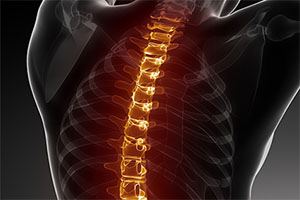
Discography
Additional testing is required to assign a “pain generator” status to the individual disc. Discography is accepted as the disc evaluation “procedure-of-choice”. Discography investigates, and establishes the intervertebral discs role in the production of the patient’s low back pain. At times in the past the value of discography has been questioned. Current literature supports discography’s worth as a diagnostic tool used to investigate painful spinal conditions.
Who is a candidate and when is discography indicated?
- A patient who experiences persistent spinal (cervical, thoracic, lumbar) pain
- A disc abnormality is suspected
- Non-invasive tests have failed to provide an explanation or source of pain
Patients who have continued pain despite previous surgery are often discography candidates.
Provocative discography is the instillation of sterile saline (not dye) into the disc looking for reproduction of the patient’s pain. Exact pain reduction supports the discs role as a “pain generator”, documenting a specific diagnosis, and allows more aggressive intervention.
Indications for Discography
We believe in the following indication, for discography:
- Failed conservative therapy
- Diagnostic tests – inconclusive (equivocal or inconsistent)
- Persistence of severe symptoms – surgery a consideration
Discography is an outpatient procedure, performed under fluoroscopy, local anesthesia and sterile conditions. When performed correctly and in “experienced hands” the main complication is a short period of increased pain. In short, discography has proven itself to be an invaluable diagnostic modality reserved for the investigation of painful spinal conditions where other non-invasive studies have been unable to provide or confused the diagnosis to allow further more aggressive treatment.

Nerve Block Therapy
The nervous system controls both conscious functions, which are under our control, and unconscious functions which occur automatically. When nerves are injured, whether by trauma or as a result of illnesses like diabetes, pain can result. This is called neuropathic pain. Often injecting local anesthetics or anti-inflammatory steroid medicines around the injured nerves can result in pain relief. This relief can be temporary, but in some cases can lead to permanent improvement. The purpose for doing nerve blocks can be diagnostic: the injection is a test to see if the pain is coming from the nerve being blocked. It can also be done in an attempt to permanently relieve or decrease pain. Sometimes in injured nerves the pain is learned by the nervous system, and the blocks are an attempt to help the nervous system relearn its normal, pain-free state. Sometimes the pain is caused by a nerve being trapped in scar tissue, and the injections are performed to try to loosen the scar tissue away from the nerve.
This neurolysis by injection can be effective with less risk than surgical exploration. A series of anywhere from three to six blocks, occasionally more, is usually necessary for both of these conditions. These blocks do not always succeed in giving permanent relief, in fact if after a few blocks your doctor does not see a steady improvement he may try alternative therapy, including medications and physical therapy, but also possibly surgery. If the pain cannot be eliminated, then your treatment will be directed at relaxation techniques to diminish pain, at rehabilitation to maintain function, and at oral medication to desensitize the nervous system. The success of nerve block therapy depends on how well established the problem is, and how much damage to the nerve has already occurred. Sometimes improvement is seen in function but not in pain, or vice versa.

Platelet-Rich Plasma (PRP) Therapy
This non-invasive, non-surgical procedure is increasing in popularity as a new form of treatment for a variety of musculoskeletal problems.
For this procedure, the doctor will take a portion of blood from the patient, and put that blood in a centrifuge, which concentrates the platelets. Platelets are known to accelerate and direct the healing of many tissues, such as ligaments, muscles and bones, by secreting what are called growth factors that stimulate growth in other cells.
The doctor will then inject a dose of the platelet-rich plasma into the injured area of the patient.
PRP therapy often gets attention in the media as a therapy common in the professional sports world. But as science continues to discover its effectiveness, more and more people in all walks of life are benefiting from it.
At the SMART Clinc, we provide individualized PRP therapy for a variety of spine and sports-related injuries, including disk injection therapy and post-surgery therapy for ligaments and tendons.
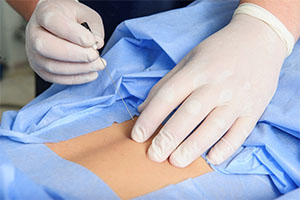
Facet Joint Injections
These injections, often referred to as “facet blocks”, can effectively break the cycle of pain which becomes chronic if left untreated. Injections can be targeted to cervical, thoracic, and lumbar areas across the entire spine from neck to lower back depending on the nerve involved. This prodedure uses contrast dye to pinpoint the source of pain within the facet joints of the spine. It also uses therapeutic steroids and local anesthetic to decrease the pain and inflammation that may be present in this area.
Pain relief from a facet joint injection procedure varies from minimal to long-term, depending on the specific symptoms. The procedure takes 10-30 minutes and you will be asked to wait 30-40 minutes after your procedure before leaving. Using a thin needle and fluoroscopy (x-ray) for guidance, the physician will place contrast, anesthetic, and steroid into the facet joint. During the procedure you may feel some slight pressure or discomfort.
The doctor will be interested in how this discomfort compares to your usual pain symptoms. In addition, he will want you to keep track of any changes in your pain symptoms in the days and weeks following the injection in order to evaluate the effectiveness of the treatment.Due to the effects of certain medications, your driving reflexes may be impaired. Consequently, you will need someone to drive you home after your exam.
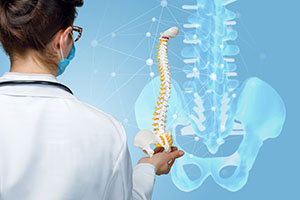
Sacroiliac Joint Injections
A sacroiliac joint injection is an injection of an anesthetic with a long lasting steroid in the Sacroiliac joints. The sacroiliac joints are located in the back where the lumbosacral spine joins the pelvis. They are paired (right and left) and are surrounded by a joint capsule like the finger joints.
The steroid injected reduces the inflammation in the joint space. This can reduce pain, and other symptoms caused by inflammation. The actual injection takes only a few minutes. The injection consists of a mixture of local anesthetic and the steroid medication . Many times prior to injecting the medicine, a small volume of contrast dye is used to confirm proper needle placement. It is done with the patient lying on the stomach with fluoroscopic (x-ray) guidance.
Immediately after the injection, you may feel that your pain may be gone or quite less. This is due to the local anesthetic injected. This will last for a few hours. Your pain may return and you may have a sore back or neck for a day or two. This is due to the mechanical process of needle insertion as well as initial irritation form the steroid itself. You should start noticing pain relief starting the 3rd to 5th day. You should have a ride home.
We advise patients to take it easy for the day of the procedure. You may want to apply ice to the affected area. After the first day, you can perform activity as tolerated. Unless there are complications, you should be able to return to your work the next day. The most common thing you may feel is soreness in the neck or back. The immediate effect is usually from the local anesthetic injected. This wears off in a few hours. The medication starts working in about 5 to 7 days and its effect can last for several days to many months.
This procedure is safe when performed in a controlled setting (surgical center, sterile equipment, and the use of x-ray.) However, with any procedure there are risks, side effects, and possibility of complications. The most common side effect is discomfort – which is temporary. The other risks involve, infection, bleeding, worsening of symptoms. As with other types of injections, you should not have the procedure if you are currently taking blood-thinning medicine (Coumadin.) Side effects related to cortisone include: fluid retention, weight gain, increased blood sugar (mainly in diabetics,) elevated blood pressure, mood swings, irritability, insomnia, and suppression of body’s own natural production of cortisone. Fortunately, the serious side effects and complications are uncommon. You should discuss any specific concerns with your physician.
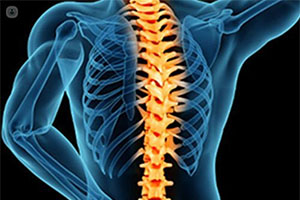
Radiofrequency Procedures
Radio Frequency (RF) Nerve Ablation (also known as RF Rhizotomy) is a therapeutic procedure designed to decrease or eliminate pain symptoms within spinal facets by temporarily deactivating minor nerves around the spine. The pain generating nerves for many patients are often small, unimportant fibers which can cause severe pain. These nerves can be temporarily shut down using radiofrequency energy to heat the surrounding tissue and deactivate the pain generating nerve fibers. The procedure is performed by accessing the affected nerve under x-ray guidance. Once properly positioned, a special probe is advanced allowing the delivery of radiofrequency energy to the targeted area. An electric current is then used to cauterize the sensory nerves that innervate the facet joint(s).
Before patients can be scheduled for an RF rhizotomy procedure, they generally must undergo a series of facet injections to verify the exact source of their symptoms. These tests may require several visits. If a patient’s pain can be taken away or significantly relieved with a local anesthetic block for a short term, then blocking the nerves with Radiofrequency denervation will usually give long term or even permanent relief. If successful, the pain relief following an RF procedure can last considerably longer than relief following local anesthetic and steroid blocks (Results can last from months to years.)
This process can be used on any area of the spine–cervical, thoracic, or lumbar. Due to the trauma to the nerve, you may experience an increase in symptoms for 5-7 days after the procedure. Pain relief benefits should be apparent within 2-4 weeks.
